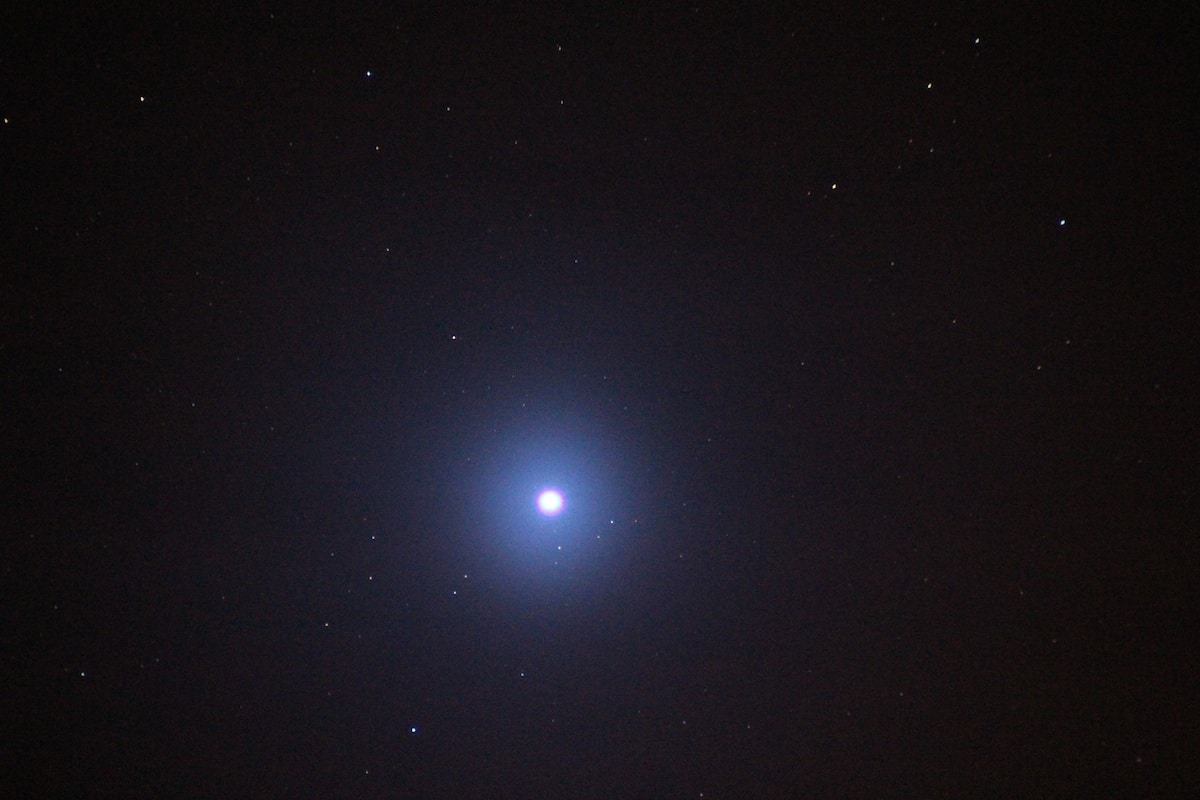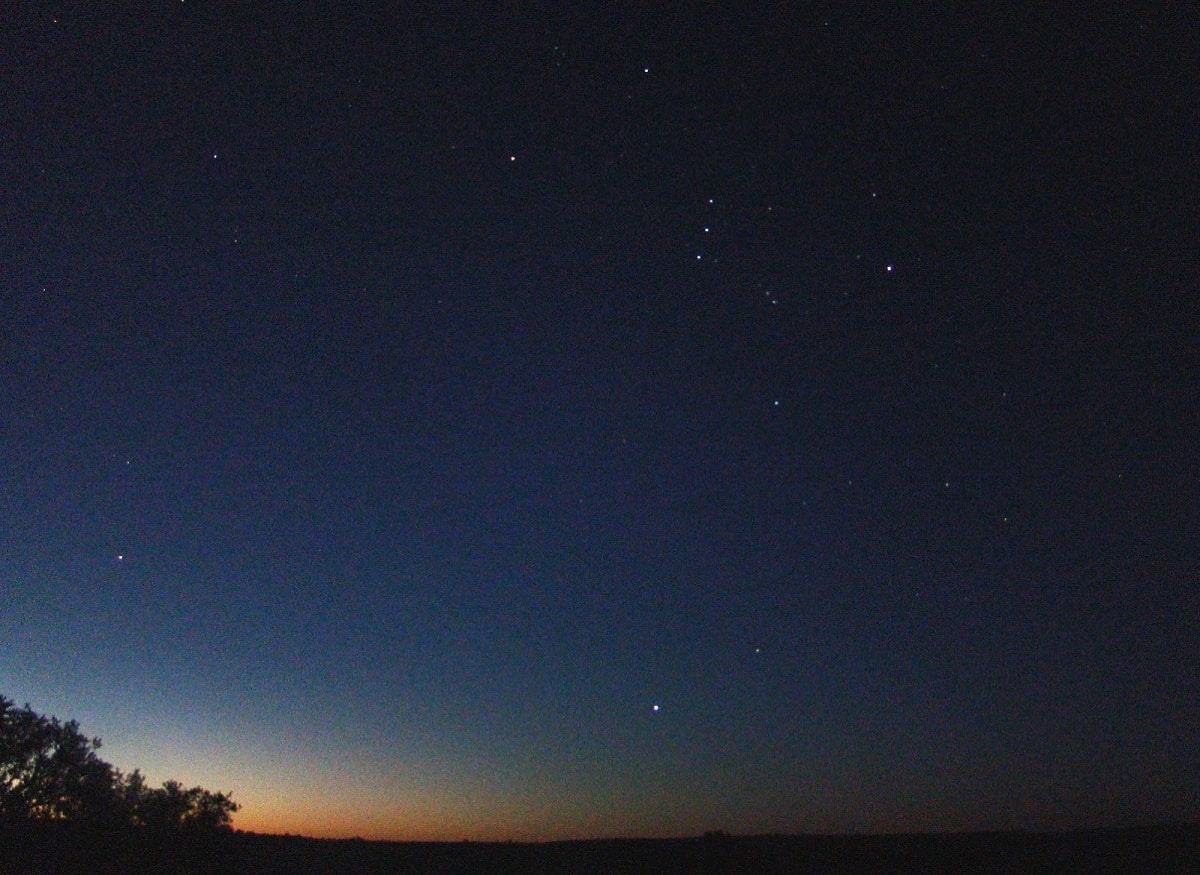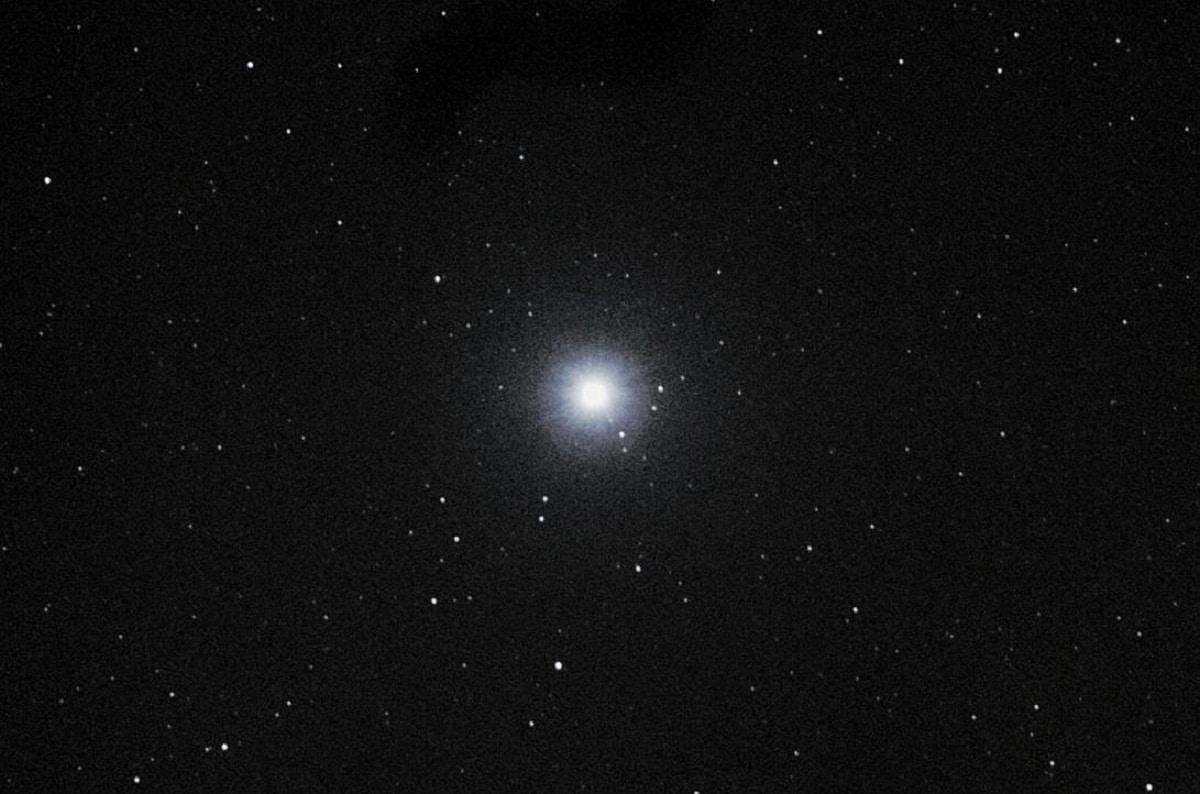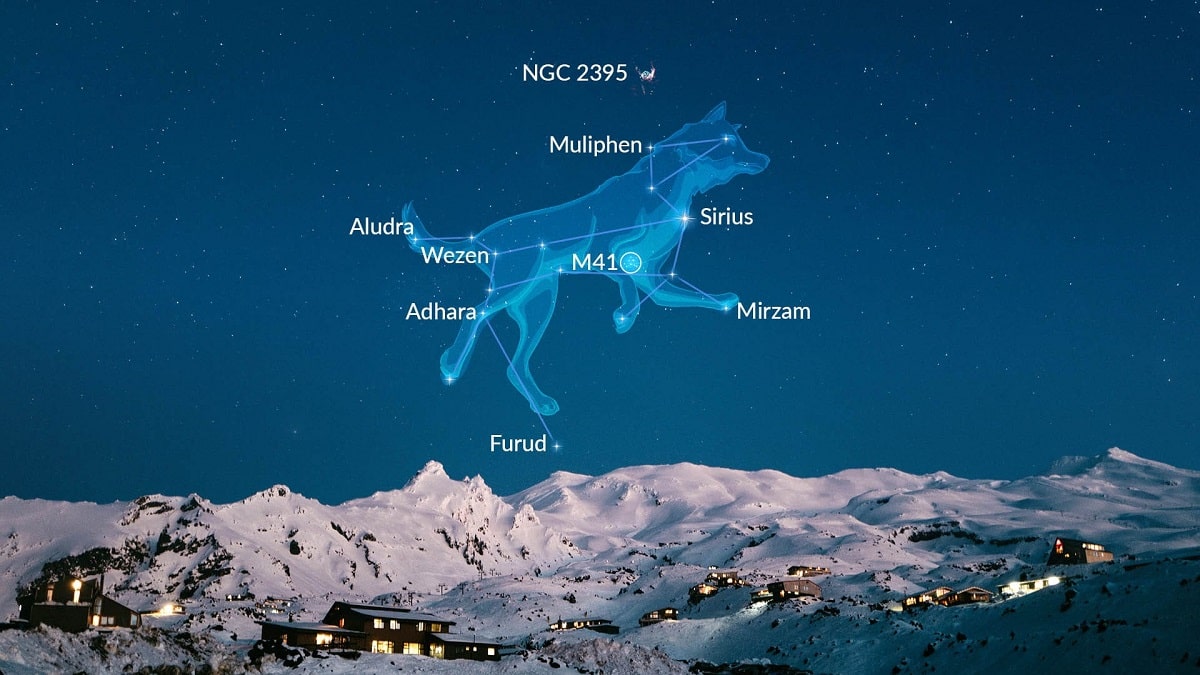
La Sirius star It is known as the brightest in the entire night sky. It is also known as the names of Sirius or Alpha Canis Majoris. It is a beautiful white star of magnitude -1,46, located about 8,6 light-years away. It is 1,5 times larger and 22 times brighter than the Sun. It has a small companion, a white dwarf, which orbits it every 50 years, but is invisible to the naked eye because it has a luminosity of +8,4.
In this article we are going to tell you everything you need to know about the star Sirius, its characteristics, some history and much more.
Key features

This star is known to many ancient cultures and is the main star in the constellation Canis Major. It is a binary star made up of two stars, Sirius A and Sirius B.. Sirius A is the largest and brightest star in the system, and is about 25 times more luminous than the Sun and has a mass about twice as much. Sirius B, on the other hand, is a much smaller and fainter white dwarf star than Sirius A. It is estimated that the two stars orbit each other every 50 years.
Sirius's color is one of the most striking features it has. To the naked eye, it appears to be a bright white star, but if we take a closer look, we will see that it emits a light of multiple colors, from blue to red. This phenomenon occurs because the star emits radiation at a broad spectrum of wavelengths, resulting in light that appears white but with a hint of color.
Furthermore, Sirius is a very young star in astronomical terms, with an estimated age of only about 230 million years. By comparison, our own Sun is about 4.6 billion years old. This means that Sirius is still a star in its growth phase, and it is possible that in the future it will evolve into a red giant and then a white dwarf.
It is also a star very close to Earth, with a distance of about 8.6 light years. Due to its proximity and its brightness, Sirius has been the subject of many studies and observations, which has allowed astronomers to learn a lot about its structure and behavior.
discovery of Sirius

The discovery of this star dates back to ancient times, as it has been one of the brightest and most visible stars in the night sky for centuries. The ancient Egyptians considered it one of the most important stars, and its appearance in the sky marked the moment when the Nile River began to flood.
In 1718, the German astronomer Johann Baptist Cysat first observed that Sirius had a companion in its orbit. However, it was the astronomer William Herschel in 1804 who discovered that Sirius was actually a binary star.
Since then, numerous studies and observations of Sirius have been carried out. In 1862, the American astronomer Alvan Graham Clark was the first to observe and photograph the Sirius companion using a telescope.
Over the years, both the main star and its companion have been found to have very different characteristics. The main star, Sirius A, is a star of spectral type A1V with a mass 2,4 times greater than that of the Sun and a surface temperature of about 9.940 degrees Kelvin. On the other hand, its companion, Sirius B, is a white dwarf star, which is the most massive star of its kind known.
Some history
Throughout history, Sirius has played an important role in humanity's fundamental knowledge. The ancient inhabitants of the Nile Valley discovered a correlation between the timely flooding of the Nile and the first appearance of Sirius on the horizon shortly before dawn. In fact, when making their calendars, the Egyptians inserted another month called Thoth when the star Sirius, which they called Sotis, rose in the twelfth month of their common calendar. The Greeks also used observations of the appearance of Sirius to develop their calendars., probably inspired by observations of those original comments.
Sirius is also the first protagonist to determine the distance of the stars, although it is somewhat inaccurate, since it is the first form of measurement. It seems that the Scottish astronomer James Gregory (1638-1675) devised a way to compare the brightness of the Sun with that of the stars, using the property that the light decreases in the order of the square of the distance between them. Instead of using sunlight, Gregory used the light of the star reflected by Saturn. Later, Isaac Newton (1642-1727) concluded that Sirius is a million times the distance between the Earth and the Sun. This value is incorrect but it is certainly an excellent basis for validating the cosmic distances known at that time.
Observation of the star Sirius in the night sky

Its brightness is -1,46 magnitude, only surpassed by some planets, such as the moon and the sun. It is a white star 25 times more luminous than the Sun with a surface temperature of 9.940 K. It is the fifth closest star to Earth. The distance from Earth is 8,6 light years.
It belongs to the Can Mayor constellation and is visible from mid-latitudes on the southern horizon., not too high above the horizon. In Spain, Sirius is usually visible during most of the winter and spring, with the period between the end of January and mid-March being the most prominent time interval for its observations.
It is visible from almost the entire planet except from the regions above 73º north latitude, so from the regions below 73º south latitude, Sirius is a circumpolar star (always visible). It serves as a reference to locate other celestial bodies such as the open clusters M41, M46, M47 and M50.
I hope that with this information you can learn more about the star Sirius and its characteristics.